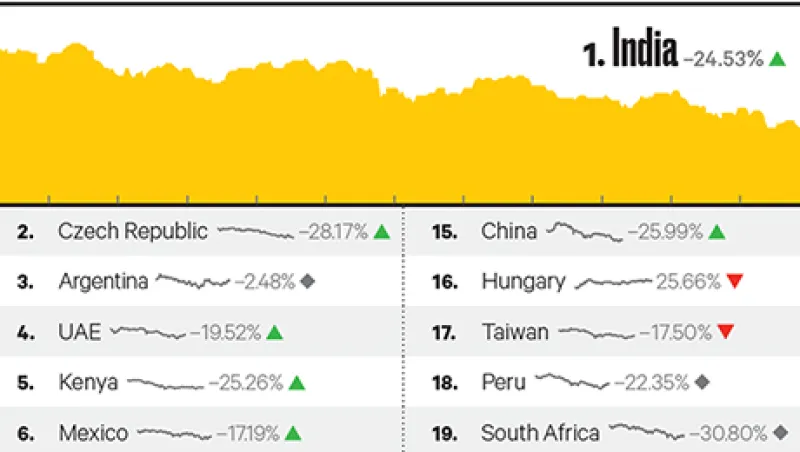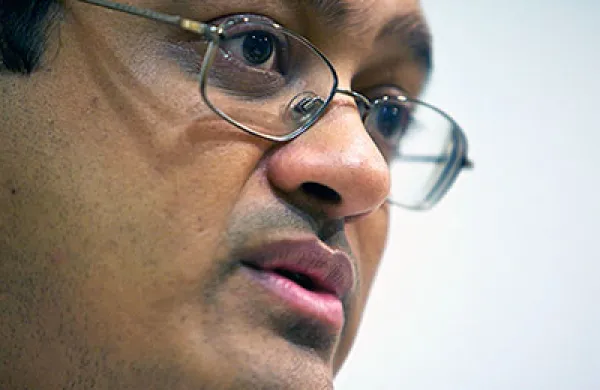Investors in India are starting to get restless. In May 2014, Prime Minister Narendra Modi swept into power after promising to revive the country’s sluggish economy. The reform-minded politician, a former chief minister of the western state of Gujarat, had energized the economy there by welcoming foreign investment and promoting infrastructure development. He pledged to do the same for the country as a whole by pushing a host of land, labor and tax reforms. Investors piled capital into Asia’s third-largest economy, anticipating that Modi’s agenda would spur faster growth and improve productivity.
Nearly two years later, Modi has relatively little to show for his efforts. “The structural reforms all seem to be moving at a glacial pace or not moving at all,” says John Chisholm, CIO of Acadian Asset Management in Boston. Among the highest-profile reforms is a proposed goods and services tax (GST), which would replace a patchwork of indirect taxes on goods and services imposed by the country’s 29 states with a single national levy. The goal is to create a common national market, freeing up the flow of goods and fostering investment. Efforts to implement the tax by April 1 have been stymied by the opposition Indian National Congress party; it first proposed a GST years ago but after losing to Modi’s Bharatiya Janata Party in 2014 is looking to deny Modi another political victory. As a result, although India’s growth rate exceeded China’s last year, at 7.3 percent, it lags behind its potential rate of 8 to 12 percent, says Chisholm.
“At the current rate, economic activity will take a long time to have the impact on productivity that investors were anticipating,” he says. Bureaucratic red tape, allegations of corruption, crumbling infrastructure and a two-year drought have also held back growth.
India’s challenges extend beyond Modi. Foreign investors may lose confidence in India’s macroeconomic outlook if the governor of the Reserve Bank of India, Raghuram Rajan, is replaced by a less credible official when his term expires later this year, says Alex Wolf, emerging-markets economist at Standard Life Investments in Edinburgh, Scotland. “Rajan has been a powerful figure at the RBI, providing a newfound credibility around their inflation targeting framework and macroeconomic policies,” he says. The central bank cut interest rates by a total of 1.25 percentage points in 2015, to a four-year low of 6.75 percent, in response to decelerating inflation. Consumer prices rose just 5.4 percent last year, inching closer to the RBI’s target of 5 percent.
The previous administration encouraged banks to lend freely following the 2008–’09 global financial crisis to help revive the economy, but that left a legacy of bad debts. Rajan is now trying to clean the balance sheets of public sector banks to spur lending. In his latest budget Finance minister Arun Jaitley announced plans to inject 250 billion rupees ($3.7 billion) of capital into the banks in the fiscal year beginning April 1, a fraction of the 1.8 trillion rupees the government says the banks need by 2018.
India is less exposed to global developments than many other emerging markets because it’s a services-oriented economy rather than an export-driven one, argues Chisholm. But Sebastian Mallaby, Washington-based senior fellow for international economics at the Council on Foreign Relations, says a generalized pullback of foreign capital from emerging markets could hurt India. “In an environment of higher market volatility, traders keep their overall risk below a set cap,” he explains. Traders may have to reduce exposure to India if all emerging markets are thinly traded, he says.
Yet India can continue to attract capital despite its policy setbacks, analysts say. With consumer spending driving domestic demand, low oil and commodity prices reducing the country’s imports bill and easier monetary policy, growth should hit 7.5 percent in 2016, compared with an average of 6.4 percent across emerging and developing Asia and 6.3 percent in China, the International Monetary Fund forecasts.
Not only does India offer the allure of strong growth, negative yields in Japan and much of Europe and the risk of a U.K. exit from the European Union limit attractive investment opportunities elsewhere. Investors have internalized the disappointment in Modi, says Mallaby. “Regardless of the political barriers to structural reform, India is set to see improvement both on a cyclical and structural basis,” says Standard Life’s Wolf.
Get more on emerging markets.






